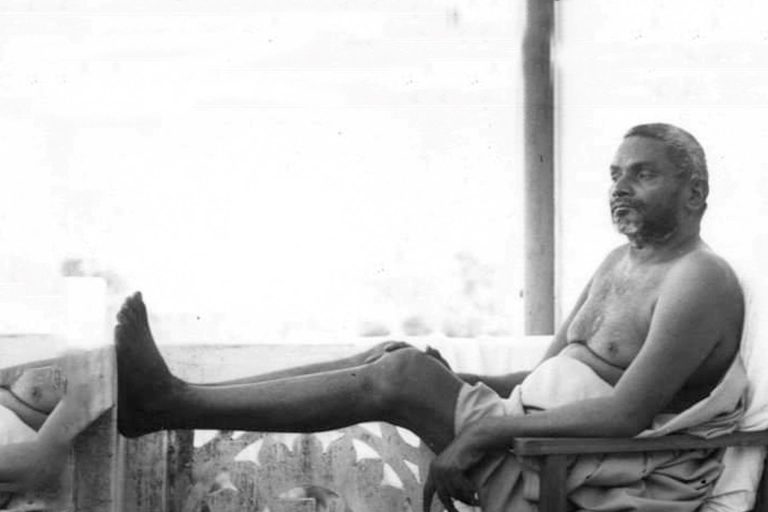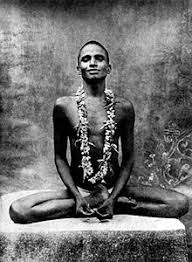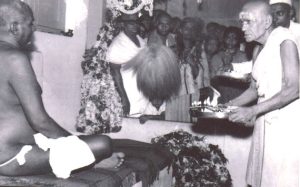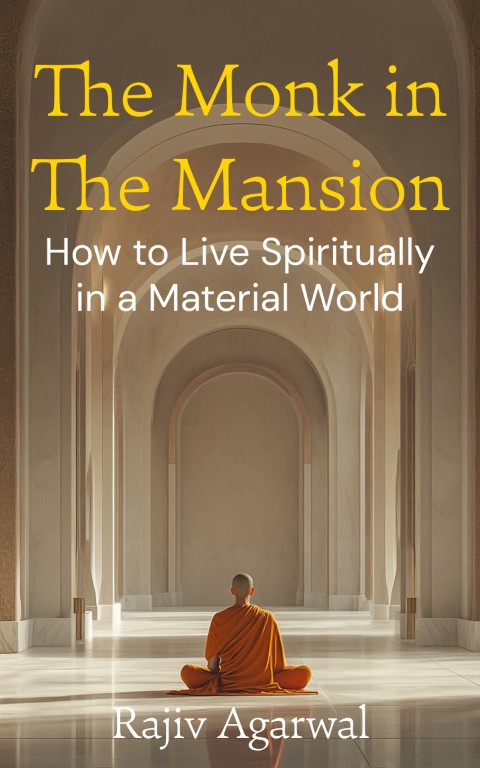
Chidakash Gita - The Teachings of Bhagavan Nityananda
There’s a mysterious pull to the Chidakash Gita, one that doesn’t come from its structure or poetry but from its raw, unfiltered truth. Reading it feels less like studying a text and more like sitting in the presence of someone who has dissolved every barrier of identity and speaks from a place you can only glimpse on the edges of silence. It’s not a book for the intellect; it’s a fire for the heart. And the one who lit this fire is Bhagavan Nityananda—a being who embodied what it means to live as the infinite while walking in the finite.
Meeting Nityananda

Who was Bhagavan Nityananda? That question feels almost irrelevant because the more you try to grasp him through biography, the further you drift from the essence of what he stood for. He wasn’t concerned with telling stories about his life, teaching systems, or crafting a legacy. He lived like an open sky, offering shade to anyone who came but never holding them back when they wanted to leave.
Born in Kerala in the late 19th century, He was said to wander forests as a child, lost in meditative absorption, already untethered to the world most of us cling to. Those who met him couldn’t decide if he was a divine being or simply incomprehensible. But what struck everyone was his presence—unshakable, boundless, and completely indifferent to the games of the ego.
Nityananda didn’t preach. He didn’t make grand declarations about his enlightenment. He sat in silence for much of his life, exuding a stillness that spoke louder than words. People would gather around him, asking for guidance, and sometimes he’d offer cryptic yet profound words that landed in their hearts, even if their minds couldn’t understand. Those words became the Chidakash Gita.
What Is the Chidakash Gita?
The Chidakash Gita isn’t a conventional scripture. It doesn’t hold your hand and walk you step by step toward enlightenment. Instead, it’s more like a mirror held up to your soul, forcing you to confront what lies beneath the surface.
The title itself is significant: Chidakash refers to the infinite sky of consciousness, the boundless awareness that permeates everything. Gita means “song,” but don’t expect lyrical poetry or rhythmic chants. This song is raw and direct—a cascade of truths from someone who has seen the One in everything and refuses to dilute it for the sake of comfort.
The teachings are often paradoxical. Nityananda speaks of the mind as both the source of bondage and liberation. He talks of the world as both an illusion and a manifestation of the infinite. His words challenge you to drop your rigid ideas about reality and instead look directly at your experience. He doesn’t tell you what to believe—he asks you to see for yourself.
The Teachings of Swami Nityananda : A Call to the Infinite
At the heart of the Chidakash Gita is a recurring theme: you are not what you think you are. Over and over, Nityananda points to the truth of your being—boundless, eternal, untouched by the transient dramas of life. He doesn’t use complex metaphysics or detailed arguments. He simply states it as it is.
It’s so simple, yet it cuts through every excuse the mind throws up. The message is clear: the mind creates the illusion of separation, and when that illusion falls away, there’s only the Self—whole, complete, and indivisible.
He speaks of the world as a dream, not to dismiss it but to show its impermanence. Like a cloud that appears and dissolves in the sky, all things come and go. What remains is the sky itself, the Chidakash, your true nature.
A Personal Encounter
When I first read the Chidakash Gita, it wasn’t easy. The words felt distant, almost cryptic. But as I sat with them, something began to shift. It wasn’t the words themselves but the space they opened up inside me.
There’s a strange power in Nityananda’s teachings. They don’t feel like teaching at all. They feel like someone reaching into the core of your being and asking, “Do you see it yet? The thing you’ve been searching for, it’s already here.”
Nityananda’s Silence as His Teachings

Perhaps the most striking thing about Bhagavan Nityananda isn’t what he said but what he didn’t say. His silence was his greatest teaching. People would sit near him and feel their restless minds begin to quiet. In that silence, they’d find answers to questions they didn’t even know they were asking.
The Chidakash Gita captures some of that silence, but it’s only a glimpse. To truly understand Nityananda’s message, you have to go beyond words. You have to sit in the stillness he pointed to, the stillness that isn’t outside you but at the core of your being.
Nityananda doesn’t tell you to renounce the world or seek enlightenment in some distant place. He points you back to yourself, to the awareness that’s always been there but often overlooked. His teachings are a call to wake up, to stop chasing shadows and see the light that’s always been shining.
Though Bhagavan Nityananda left his body in 1961, his presence continues to be felt by those who seek him. His teachings, though sparse, are alive in the hearts of those who meditate on his words and his silence.
So, as you read the Chidakash Gita, don’t approach it as a scholar or a seeker looking for answers. Approach it as someone ready to let go of everything they think they know. In its pages, you might just find the infinite sky of consciousness that Nityananda spoke of—not as a concept, but as your own Self.
Nityananda quotes
Below are a selection of quotes from the Chidakash gita, which are an essence of Nithyananda teachings. You will see paralleles in them with the teaching of Nisargdatta Maharaj, Ramana maharshi and countless other enlightened beings.
- Jnanis are mindless. To Jnanis, all are the same. To them, it is always sunrise.
- Jivatman is Paramatman.
- A man or woman should be educated. What is education? Jiva should know the secret that He is the Paramatman.
- Paramatman is in Jivatman. The real Mukti is to know the subtle in the gross.
- Just as we see the sky reflected in the water in an earthen pot, so also, to the internal vision, the sky of consciousness becomes visible.
- On a tree grow numberless flowers. The flowers all perish but the tree does not perish for a long time. The visible is like flowers; the invisible is like the tree.
- From a plank, are manufactured tables, chairs, etc. So also, Brahman is the primordial substance from which numberless worlds are formed.
- In darkness light persists. Darkness is ignorance. Light is Jnana (knowledge). One must see oneself. One must return to the place from whence one started.
- People generally think that a teacher’s body is guru. A man does not become a guru by simply wearing sandals and counting beads on a rosary. One who talks ‘Brahma Jnana’ and gives stones to his disciples is not a guru. Whatever a guru speaks in words, he must show it in action. First one must practice and after realisation, he must begin to teach others.
- One who has thoroughly wiped off the idea ‘I am the body’ is fit to be called a guru. There is none higher than such a one. There is no god above such a guru. Such a guru is God, and God is such a guru.
- If you enter the ONE, you lose sight of the MANY.
- In the infinite, there is no finite.
- There, everything is one. Duality exists here only. On the other side, there is no duality. A perfect man (Avadhoota) is the greatest of men
- When SAT unites with CHIT, Ananda (bliss) is the result. This Ananda is Paramananda, Sri Satchitananda.
- What is visible is transient. It is perishable.
- The real place of Jiva is formless, indivisible. God pervades all things movable and immovable. He is the ONE without a second. God is the origin of Vedas. He is the Lord of the body. He is the Lord of Jivanmukti.
- The mind is the creator of everything. When the mind is annihilated, everything is merged in the Self.
- The one who has realized the Self sees the same Self in all beings and all beings in the Self.
- The true knowledge is the knowledge of the Self. All other knowledge is ignorance.
- The Self is beyond birth and death, beyond pleasure and pain, beyond all dualities.
- The realized one is free from desires, free from attachments, free from the sense of ‘I’ and ‘mine’.
- The Self is the witness of the mind and its modifications, but is not affected by them.
- The mind creates bondage; the mind creates liberation. Therefore, control the mind.
- The Self is ever free, ever pure, ever blissful. Realize this through meditation.
- The world is an illusion; the Self alone is real. Know this and be free.
- The one who has realized the Self is beyond all rituals, beyond all scriptures, beyond all doctrines.
- The supreme light is the universal light. O Mind! Abolish the idea of ‘otherness’. Have the idea of ‘sameness’.
- Rivers and streamlets enter into the sea and there become one. Similarly, finite things become one in the infinite. Dualism loses itself in monism. Monism is oneness. This realisation of the oneness is the most supreme.
- He who meditates on God and who is desireless, is the saviour of the world. He who meditates on God is the Muni (sage). He is Shiva and Shiva is he. All that is visible is Shiva.
- When the mental moods are destroyed, all differences disappear. Such a man has no desire. He is a Sannyasi. He is a yogi. A man who has Manas wants everything. A man who has no Manas, has everything in himself.
- Shiva-Shakti is one, indivisible. Shiva-Shakti is salvation.
- The mind is the cause of both bondage and liberation. When the mind is attached to sense objects, it leads to bondage; when it is detached from them, it leads to liberation.
- The Self is beyond all attributes and forms. It is the eternal witness, pure consciousness, and bliss absolute.
- By meditating on the Self, one transcends all dualities and attains the state of non-dual awareness.
- The realized sage sees the same Self in all beings and treats everyone with equal vision.
- True knowledge is the direct experience of the Self, beyond the limitations of the mind and intellect.
- The Self is ever free, ever pure, and ever blissful. It is not affected by the changes in the body or mind.
- The guru is the one who guides the seeker to the realization of the Self. Surrender to the guru with full faith and devotion.
- The essence of all scriptures is the knowledge of the Self. By realizing the Self, one attains the ultimate goal of life.

